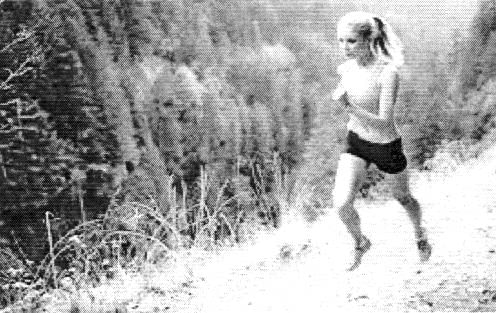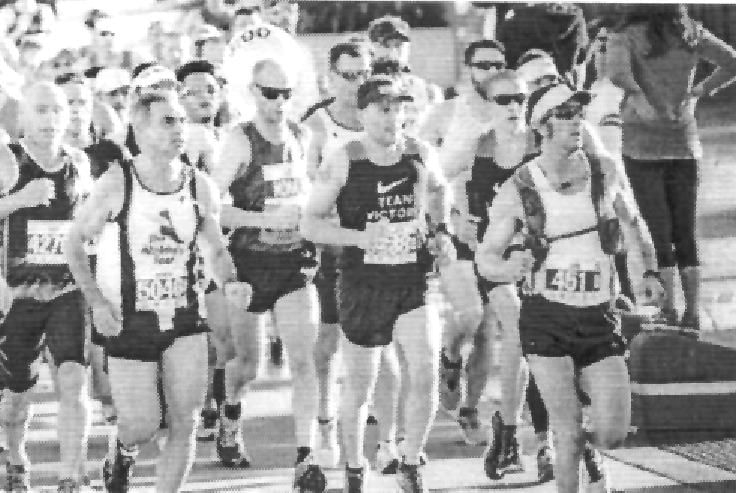Short Questions With Answers - Training in Sports | Physical Education Class 12(XII) - Notes & Model Test Papers - Humanities/Arts PDF Download
Q.1 What is speed?
Ans. It is the ability of an individual to cover a unit distance in minimum time.
Q.2 Define is a strength?
Ans. It is the ability of an individual to overcome or act against resistance.
Q.3 What do you mean by endurance?
Ans. It is the ability of an individual to resists the fatigue for long time.
Q.4 Write the meaning of flexibility?
Ans. It is the ability of an individual to move his or her joints effectively through of full range.
Q.5 What is coordinative ability?
Ans. it is the ability of an individual to perform a sequence of movements smoothly and accurately
Q.6 What do you mean by Speed endurance?
Ans. It is the ability of an individual to perform body movement with high speed to resist fatigue in activities. Example - 400 mt race.
Q.7 What is strength endurance?
Ans. Strength endurance is the ability to develop sustained contraction force of muscles one time.
Q.8 Define is acceleration?
Ans. It is the ability of an individual to reach & achieved speed from in shortest period of time.
Q.9. Explain is explosive strength?
Ans. It is the ability of an individual to overcome resistance with high speed.
Q.10. What is reaction ability?
Ans. it is that ability of an individual to react effectively and quickly to a signal.
It is two types:-
1. Simple / General reaction ability
2. Complex reaction ability
Q.11. Define movement speed?
Ans. it is the ability of an individual to do movement in minimum time. It depends upon techniques explosive strength, flexibility & coordination abilities.
Q.12. What is the meaning of sports training?
Ans. Sports training is a planned and controlled process in which, For achieving a goal, changes in complex sports motor performance.
Q.13. What are pace races?
Ans. Pace races mean running the whole distance of a race at a constant speed. In pace races, an athlete runs the race with uniform speed. Example - 800mt, 1500mts.
Q.14. What do you mean by adaptation ability?
Ans. It is the ability to adjust or change the movement effect on the basis of changes or anticipated changes in the situation. Because in the most of the sports players have to play as per the circumstances.
Q.15. Describe the fartlek Training Method?
Ans. It is another method to develop endurance ability. This method was developed by swedish coach “Gosta Holmer” in 1930, so it is also known as “Swedish play” or “Speed play” (changes her/ her pace. Himself/ herself according to surrounding(hills, rivers, forest, mud etc.)This method helps in development of strength and endurance of the sports person. Athlete changes his / her speed accordingly. So it is self-disciplined in nature. The heart rate fluctuates between 140 - 180 beats/ minute/ Fartlek training involves varying our pace throughout our run. Alternating between fast and slow pace.
“Fixed distance in fixed time by variable of movement/ pattern/place of running”.
Q.16. Briefly explain the types of endurance.
or
“Endurance is one of the most important factors for high performance in games & sports” Explain
Ans. Endurance- As the result of a physiologic capacity of the individual to sustain movement over a period of time. Endurance in sports are of different types. These are as follows -
1. Basic endurance:- is the ability of an individual to do the Movement in which large no. of body & muscles involve at slow pace for a duration such as Walking, Jogging, Swimming at a moderate speed.
2. General Endurance:- is the ability of an individual to resist fatigue satisfactorily caused by different type of activities.
3. Specific Endurance:- is the ability of an individual to complete the task without any fatigue. It’s requirement is depends upon the nature of activity (games and sports) Requirement of specific endurance of a boxes is different from that of a Wrestler
Speed Endurance:- is the ability of an Individual of performing a movement with high speed to resist of fatigue in activities upto 45 seconds.
In short term endurance:-* Short term endurance is needed to resist fatigue in sports activities lasting from 45 seconds to 2 minutes. Ex. 800 m race.
The medium-term endurance:- is the activity lasting from 2.min to 11 minutes. Ex. 1500 & 3000 mts.
Long term Endurance:- is needed for those sports which require more than 11 minutes time ex. 5000m to 1000m cross country race
Q.17. Discuss the types of speed in details?
Or
Elucidates the methods of improving speed?
Or
Beiefly explain the methods for improving speed?
Ans. Speed as the capacity of an individual to perform successive movement of the same pattern at a fast time. Speed is the product of genetic & environmental factors. Genetic factors set limit of speed but environmental factors are also play a vital role. In fact following mentioned methods are usually adopted for the development of speed & this method help to training many organic systems & motor components.
Pace run:- Pace run means running the whole distance with a constant speed. Generally, 800mt and above races are included in pace races. An athlete can run a distance of 300m. at full speed but in longer races such a 800mtr. Or above, he must conserve his energy by reducing the speed. Ex-If there is a runner in the 800m race. His best time is 1 minute 40 seconds. So he should run first 400 m in 49 seconds and next 400m in 51 seconds. This procedure is called pace race or pace run.
Acceleration Run:- Acceleration run is usually used to develop speed indirectly by improving explosive strength, technique, flexibility, and movement frequency. It is the ability of a sprinter to achieve high speed from a stationary position. For direct improvement of acceleration speed a sprinter should do 25-30 mt. sprint of 6-12 times. The maximum speed should be achieved within 5-6 sec. sufficient intervals should be provided between the repetitions..
Q.18. What do you mean by flexibility? Explain types of flexibility?
or
What is the difference between active & passive Flexibility?
Or
Elaborate on the methods of improving flexibility.
Ans. Flexibility is the range of movement of the joint of a sports person.

1. Active flexibility:- The ability of an individual to do the joint movement for a longer range without any external help. Active flexibility is always greater than passive flexibility. Ex. doing any stretching exercise without external help.
It is two kinds:-
* Static Flexibility:- It is usually required by a sports person when he remains in static position e.g. Diving, sitting, lying, etc.
* Dynamic Flexibility:- It is needed for walking and running its increase by static stretching.
2. Passive Flexibility:- the ability to do joint movement with a greater range with an external help of partner. This flexibility is largely determined by joint structure, stretchability of the muscle and ligament. Passive flexibility helps in the development of active flexibility.
Q.19. Sandeep is making a handball team for which he designed a training program. During the training programe, he noticed a few players are very good shooter but they were lacking stamina or endurance were getting tired very easily. Now Sandeep tried to enhance the endurance level of these players by different methods.
Q1. The player was lacking with which component in them? * Which components were lacking in the players.
Q2. To develop the capability to resist the fatigue in the players which type of training will you suggest?
Q3. What are the components required for football or handball players to perform better?
Ans. 1. They were lacking stamina or endurance.
2. I’ll suggest to continuous & interval training to develop the motor components.
3. Endurance, speed, strength, and coordination components are important for football or handball players
|
12 videos|68 docs|31 tests
|
FAQs on Short Questions With Answers - Training in Sports - Physical Education Class 12(XII) - Notes & Model Test Papers - Humanities/Arts
| 1. What are the benefits of training in sports? |  |
| 2. How long does it take to see results from sports training? |  |
| 3. What are some effective training methods for sports? |  |
| 4. How can I prevent sports-related injuries during training? |  |
| 5. How important is rest and recovery in sports training? |  |
|
12 videos|68 docs|31 tests
|

|
Explore Courses for Humanities/Arts exam
|

|

















